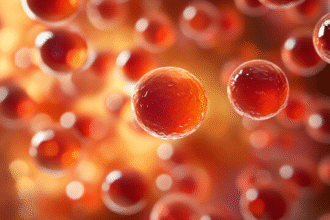Key Points
- Crohn’s disease (CD) is a chronic, relapsing inflammatory bowel disease characterized by granulomatous inflammation that can affect any part of the gastrointestinal tract.
- Commonly involves the terminal ileum and colon; displays a segmental (‘skip lesions’) distribution.
- Presents with abdominal pain, diarrhea, weight loss, and systemic features such as fever and malaise.
- Extraintestinal manifestations include arthralgia, skin lesions, ocular inflammation, and oral mucosal involvement.
- Etiology is multifactorial involving genetic susceptibility, environmental triggers, and an exaggerated immune response.
Introduction
Crohn’s disease (CD) is a type of inflammatory bowel disease (IBD) that results in chronic inflammation of the gastrointestinal tract. Its etiology remains unclear, but it is believed to result from an interplay between genetic factors and environmental exposures that trigger an aberrant immune response, leading to intestinal mucosal damage and systemic manifestations.
Epidemiology
- Prevalence: Higher in Europe and North America; incidence is rising globally.
- Age: Common onset in adolescents and young adults with a smaller secondary peak around age 50.
- Gender: Affects both men and women, with slight variations based on region.
Etiology and Pathogenesis
- Genetic Predisposition: Specific susceptibility genes (e.g., NOD2/CARD15) increase the risk.
- Immune Dysregulation: An exaggerated Th1/Th17 immune response leads to granulomatous inflammation.
- Environmental Triggers: Smoking, diet, and infections may play key roles.
- Intestinal Barrier Dysfunction: Damage to the mucosal barrier allows luminal antigens to trigger immune responses, propagating inflammation.
Clinical Manifestations
Gastrointestinal Symptoms
- Abdominal Pain: Often crampy, localized to the right lower quadrant or diffuse.
- Diarrhea: Can be frequent, sometimes with blood and mucus.
- Weight Loss and Malnutrition: Due to malabsorption and decreased appetite.
- Fistula Formation: May lead to abscesses or perianal disease.
- Intestinal Obstruction: Due to stricturing inflammation.
Systemic and Extraintestinal Manifestations
- Fever and Fatigue: Common during flare-ups.
- Arthralgia/Arthritis: Peripheral or axial joint involvement.
- Dermatologic: Erythema nodosum, pyoderma gangrenosum.
- Ocular: Uveitis or episcleritis.
- Oral Lesions: Aphthous ulcers.
Diagnostic Evaluation
Laboratory Tests
- Inflammatory Markers: Elevated ESR and CRP during active disease.
- Complete Blood Count: May reveal anemia of chronic disease and leukocytosis.
- Stool Studies: To exclude infectious causes.
Endoscopy and Imaging
- Colonoscopy: Reveals segmental inflammation, cobblestoning, deep ulcerations, and skip lesions.
- Histopathology: Demonstrates granulomas, lymphoid aggregates, and chronic inflammatory changes.
- Imaging: CT or MRI enterography can delineate extent of disease and complications such as fistulas and abscesses.
Management
Medical Treatment
- Aminosalicylates: May be used in mild disease.
- Corticosteroids: For inducing remission during flare-ups.
- Immunomodulators: Azathioprine, 6-mercaptopurine for steroid-sparing effects.
- Biologic Agents: Anti-TNF (infliximab, adalimumab), anti-integrin (vedolizumab), and anti-IL12/23 (ustekinumab) for moderate to severe cases.
- Small Molecule Therapies: Janus kinase (JAK) inhibitors like tofacitinib offer new avenues for treatment.
Surgical Intervention
- Indications: Failure of medical therapy, complications (abscess, fistula, strictures), or perforation.
- Procedures: Resection of affected segments; surgery is not curative and recurrence is common at anastomotic sites.
Long-Term Management and Surveillance
- Monitoring Disease Activity: Regular clinical evaluation, laboratory tests, and imaging/endoscopy for assessment of mucosal healing.
- Nutrition and Lifestyle: Dietary modifications, smoking cessation, and nutritional support play a vital role.
- Psychosocial Support: Addressing quality of life, stress, and depression is crucial as CD is a chronic, relapsing condition.
Patient Education
- Understanding the Disease: Educate about the chronic nature of CD and importance of medication adherence.
- Lifestyle Adjustments: Guidance on dietary changes, stress management, and smoking cessation.
- Follow-Up: Routine follow-ups and surveillance colonoscopies to monitor for complications including colorectal cancer.
References
- Baumgart DC, Sandborn WJ. Crohn’s disease. Lancet. 2012;380(9853):1590–1605.
- Hanauer SB. Inflammatory bowel disease: epidemiology, pathogenesis, and therapeutic opportunities. Inflamm Bowel Dis. 2006;12 Suppl 1:S3-9.
- Xavier RJ, Podolsky DK. Unravelling the pathogenesis of inflammatory bowel disease. Nature. 2007;448(7152):427–434.
- Torres J, Mehandru S, Colombel JF, Peyrin-Biroulet L. Crohn’s disease. Lancet. 2017;389(10080):1741–1755.






